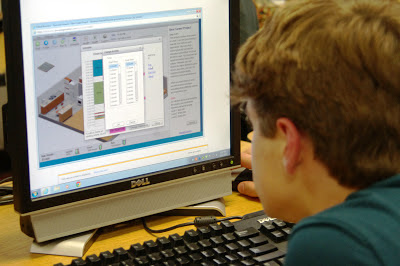Jesse Livermore (July 26, 1877 – November 28, 1940) is one of the most famous legendary traders in stock market. His intriguing hero’s journey in the Wall Street was well recorded in the book – “Reminiscences of a Stock Operator” by American author Edwin Lefèvre. And, this book is widely quoted in many trading books and recommended in many trading classes.
But, not many people know about his “Livermore Secret Market Key” which was written by himself and published in 1940. This book can now being found in Wikipedia Link for free download. Jesse Livermore spent up to 40% of his book in explaining the technical details of his operation in the stock market. The challenge is for the reader to understand and implement it.
Unfortunately, it is not a simple task to understand the method in table form. For there was no programming flow-chart during his time, he used a table and long procedures to go through how to fill it up. Most beginners will lost his way in their first few attempts.
The objective of this article is to demonstrate that the 6-columns table can be programmed into 6-levels of band in modern price chart, and it would faciliate the readers to visualize the interaction of Jesse Livermore Secret Key and the stocks.
Fig 1. Transformation of Livermore Secret Market Key from Table to Price Chart.
Fig 2. The Livermore Secret Market Key in Action.
One of the famous quote from Jesse Liver more is:
"Wall Street never changes, the pockets change, the suckers change, the stocks change, but
Wall Street never changes, because human nature never changes".So, What do you think? IF he is still around today and using the same method, written 70+ years ago, can he still make money?The following are various charts using Livermore Secret Market Key and they clearly demonstrate that he is right. For this method is advocating Trend Trading and ignore minor noise (which means do not run in and out of a stock too frequently).A Minor Change in the Rule:During his time, Jesse Livermore used fixed amount of dollar to define the "Levels of Band" as filter, similar to
Point and Figure charting method using 3 point change. But as of today, there are stocks trade more than hundreds or thousands of dollar, so two types of changes can be applied to the original method to see the effect. The first change in the method is, logically, using the fixed percentage change, and second, using the fixed amount of Average True Range(ATR) for the band's level.
Fig 3. Livermoare Secret Market Key applied on SnP500 ETF(SPY) (Weekly)

In Figure 3, the upper chart shows the "Fix Percent Band" while the lower chart shows the "ATR Band".
Fig 4. Livermoare Secret Market Key applied on SnP Financial Sector ETF(SPY) (Weekly)

There are two points to be made in Figure 4 (Click and Zoom In).
1) It is Crystal Clear that if one were to follow the weekly chart religiously, he will not suffer from the 2008 financial crisis. For the chart shows a clear down trend.
2) Using "ATR Method" is superior than "Fix Percentage Method", for every stock/commodity/ETF has its own characteristics in terms of Volatility. Using ATR method help to adjust the band-level automatically for all vehicles.
So, from here on, the following charts will ONLY use ATR band (Dynamic Band that self-adjust to the stock volatility) as demonstration.
Fig 5. Some Hot stocks - Apple and Google (Weekly).

Yes. Due to whatever reason, even till today, there are still people using "
Buy and Hold" method in the market. From the above Chart, there are two points we can learn:
1) IF the Goal is to make profit from the market, follows the trend. NEVER EVER ARGUE with the price chart. IF the Goal is to PROVE he is right that the stock will eventually go up again some time in the future while the chart moving down, by all means, let him hold on as long as he like.
2) IF the market is on side-way, using Trend Trading Method would incur in lost, therefore, one need to learn to learn the master the skill of
CUTTING LOST. It would be so much better to acknowledge that was only a small error made in the market rather than let it continue to grow and eventually becomes a BIG MISTAKE.
The following are more charts to illustrate the points mentioned above.
Fig 6. Commodity - Silver and Gold ETFs (Weekly)
 .
.Fig 7. Commodity - Argriculture and Commodity Index (Weekly)

NOTE: If Argiculture commodity is moving down or in a side way, chances that those related companies are not performing too, even if whatever fundamental data of the stock are strong. Use the money to invest someway else, and wait untill the relevant commodity to move up, then buy the related stocks.
.Fig 8. Malaysia KLSE Index and Singapore STI (Weekly)
 ..
..Fig 9. Hong Kong HSI and Japan Nikkei 225 Index (Weekly)
 .
.It is very interesting to note that Malaysia market has performed so much better among her few Aisa peers since the 2008 global finacial crisis. My guess is that the DID NOT lose so much money in that crisis in the US Banks as compare to the others. :-)
"There are many times when I have been completely in cash, especially when I was unsure of the direction of the
market and waiting for a confirmation
of the next move...."
Jesse Livermore































 How did that happen and what he did?
How did that happen and what he did?